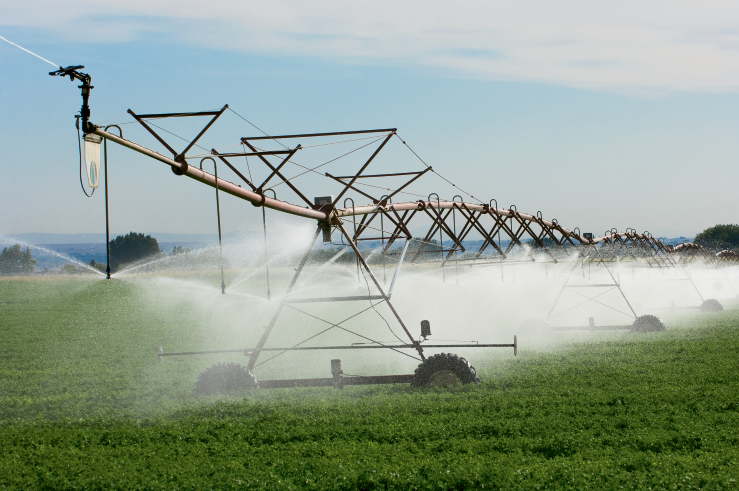Home > Alabama > Alabama Environment > Battling Drought: State Seeks to Expand Irrigation Efforts
Battling Drought: State Seeks to Expand Irrigation Efforts

The future of Alabama agriculture might be found in the streams that run through the state as scientists and lawmakers look to tap the cool-season water flows to encourage farmers to make sustainable irrigation efforts.
A 10-year study by scientists at the University of Alabama – Huntsville and Auburn University has produced promising results on creating irrigation practices that are both environmentally friendly and sustainable.
Sam Fowler, director of the water resource center at Auburn, says Alabama has about 120,000 irrigated acres compared to about 1.5 million each in Georgia and Mississippi. The hope is that in five to ten years, Alabama will have 500,000 to 1 million acres irrigated, he says.
The main research was done by Auburn and the University of Alabama Huntsville, and included research from other Alabama universities. The research found that if farmers could harvest water from streams during the winter when water levels were high and store it in an upland reservoir, it could be used during dry spells in the summer.
Traditional irrigation using groundwater wasn’t always an option for Alabama like it is for producers in neighboring states, so that’s one reason why farmers haven’t used as much irrigation, Fowler says.
Other reasons have determined irrigation use, too, such as land ownership and the farmer’s age. Older farmers are less likely to install irrigation because there might not be the return on investment. Alabama is also one of the rainiest states in the U.S., which might be why farmers haven’t considered the expense.
However, Alabama soils don’t hold moisture well, so dry spells during the growing season can jeopardize production. Irrigating crops makes a huge difference, says Richard McNider, distinguished professor of science, University of Alabama Huntsville. Their research found a 90 bushel-per-acre yield improvement between irrigated and rain-fed corn.
Farmers who normally yielded 100-110 bushels of corn via rain-fed methods harvested 200 bushels with irrigation. That’s better than the 160-bushel average of rain-fed production an Iowa farmer gets, McNider says. During their study the scientists used decades of actual rainfall data in addition to field tests.
And preventing loss in years that see intense droughts can really help farmers.
“We have a lot of water in the state, but it doesn’t always come when you want it,” says John Christy, state climatologist at the University of Alabama – Huntsville.
Beyond this research, state legislators have acknowledged the importance of irrigation for the state’s economy.
In spring 2012, a new state tax credit was created to encourage farmers to build irrigation infrastructure. The state bill was passed independently from the universities’ irrigation research, but will help irrigation investments cost less for farmers.
The Irrigation Incentives Bill provides a state income tax credit of 20 percent of the costs of the purchase and installation of irrigation systems. The bill also allows the tax credit on the development of irrigation reservoirs and water wells, in addition to the conversion of fuel-powered systems to electric power. The one-time credit cannot exceed $10,000 per taxpayer, and it must be taken in the year in which the equipment or reservoirs are placed into service.



